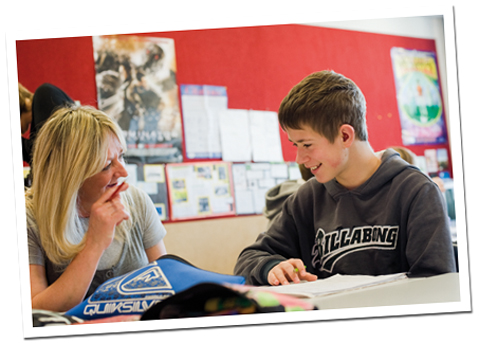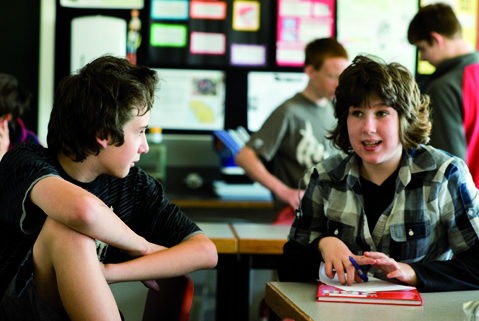Achievement; building and working with a collaborative team
High expectations
The first principle described in The New Zealand Curriculum is high expectations regardless of individual circumstances (page 9). Some schools find it hard to enact this principle for students with special needs, particularly within the context of National Standards and reporting requirements.
For children who have special education needs, as with all students, showing progress in relation to the standards will be as much a focus as showing achievement.
National Standards: Fact sheet 10
Schools need to have a clear understanding of what counts as achievement for each student and how the steps towards achievement will be monitored, measured, and reported. Collaboration for Success: Individual Education Plans (PDF 2.6MB) helps inform monitoring and day-to-day decisions about teaching and learning.
Guiding question - He pātai
- What systems, initiatives, and programmes in your school support the achievement of students with special education needs?
Working within level 1 of the New Zealand Curriculum
Some students may work within level 1 of the New Zealand Curriculum throughout their schooling, but that doesn’t mean there is a limit to their learning. Each level of the curriculum has room to develop breadth of experience and connections between meaningful achievements over time. The steps may be tiny and non-linear, but they still need to be recognised and celebrated as progress. Understanding that some students are on different pathways makes it easier to see their progress “through different eyes”.
Including Alex
Alex came to us from the local special school. Our planning for his transition included professional development on narrative assessment.
We decided to put Alex into a class of his age peers (rather than according to his curriculum level) so he could rise to the challenge of peers his own age. We agreed to focus Alex’s learning on “relating to others” [within different learning contexts]. We listed the key words from the competency description and linked them to the resources we could use: people and places in the school.
During the next weeks, Alex’s teacher aide and I worked closely with Alex, slowly introducing boundaries he could cope with. Over the course of one term, he learned to stop running, to use the class toilet, and to stay in class for longer and longer periods. His classmates were immediately accepting of Alex; they loved their new classmate. We taught them a voice and hand signal for “Stop!”, and gradually Alex responded by reducing his sounds and distracting movements. Over the next few weeks, Alex showed that he was learning more and more about interacting and co-operating in a range of situations.
We’re delighted with Alex’s progress – we’ve worked with tiny steps, each one gained slowly with a lot of patience and with carefully managed support.
Principal, Raurimu Avenue Primary School
Building and working with a collaborative team
Inclusion involves working together – teachers, aides, families and whānau, and specialists, as well as the student. Supporting a student with special needs to succeed requires people to collaborate, and they need support from the school leadership.
Building a collaborative team requires commitment to the principle of inclusion and a clear understanding of what it means for the school, the student, and their family and whānau.
Our Learning Support Team, which includes the Special Education Needs Co-ordinator (SENCO), the Principal, the RTLB, a specialist teacher, pastoral care, and school counsellors, assesses the needs of students and determines the support each student requires.
We maintain a database of students with special needs so teachers are informed and ready to cater for the diversity of the students in their classes. The students have full assessments, reports, and recommendations that support inclusive teaching and learning. I’ve gained extensive knowledge of how community agencies function and have developed working relationships with them that help us support our students. Agencies have also provided professional development when required – for example, on mental health or learning difficulties.
Successful inclusion comes down to strong, visionary leadership and effective teaching practice. We have had to work hard to change some mindsets, but staff agree that the effort is very worthwhile.
Special Education Needs Co-ordinator, Queen Charlotte College


